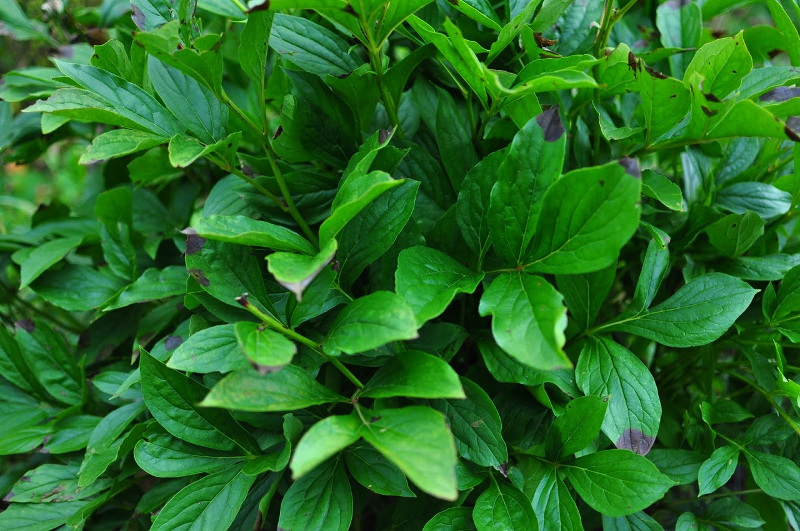Growing Peonies
Peonies have eye-catching flowers that feature layers of petals in vibrant shades. The flowers have a sweet scent, and they make wonderful and long-lasting cut flowers. There are several varieties of peony plants, and they all require similar care. Herbaceous peonies typically live in zones 3 through 8 and can handle cold climates because all of their growth dies in the fall. Tree peonies have a woody structure and live in zones 4 through 9. This variety is deciduous, so the shrub drops its foliage in the fall. Itoh peonies are a hybrid that is also herbaceous and lives in zones 3 through 8. Herbaceous varieties may need to be staked to support the large blooms.

Peonies are a deep, bright maroon red and are actually a bit pointy when they first come out of the ground. After a week or two, they start to stretch up to the sky and the tips open up a bit. It is always a bit shocking when the vibrant red stalks turn completely green and look utterly different from the previous week's growth. A typical established peony will have anywhere from 5-10+ of these stalks in a large circle that will grow straight up.

At this point in spring, the leaves are bright green and very glossy with a little red still left in the very center. When they bloom, they are a most glorious sight...layers upon layers of fluffy petals in shades of pink, red and white. And the smell is beyond divine!

Planting Peonies
Peonies need space, and while many cultivars are disease resistant, it is best practice to leave room around the plants so air can circulate around the leaves. Space plants 3 to 4 feet apart. Plant peonies in full sun because these beauties need at least 6 hours of sunlight to bloom and thrive. These shrubs like to be left alone, so select a spot that will be an excellent long-term home because peony plants do not respond well to being transplanted. Peonies prefer rich soil that is moist but well drained.
Watering Peonies
Water the ground around the peonies instead of watering the actual plant. Some cultivars are prone to powdery mildew, so keeping the foliage dry will reduce the risk of disease. Consistently water plants in the spring to help support flower production. Water peony plants when the top couple of inches of soil are dry. Continue to water peonies after the flowers fade to support the foliage.
Fertilizing Peonies
Rich soil with a high organic content is good for peony plants. Peonies need to grow quickly to bloom by late spring, so fertilizing is vital to set the plant up for abundant new growth and abundant flowers. Apply a 10-20-20 fertilizer or a product formulated for roses to support new growth. Fertilize peonies in the spring after new growth emerges and again after the plant has set buds.
Pruning Peonies
Deadhead peonies to encourage more blooms. While cut peonies last a long time, flowers on the plant decline quickly, so removing flowers when they start to fade keeps the plant looking good. The first frost will kill the above-ground growth of herbaceous peonies, so cut the wilted foliage and stems back to a few inches above ground level. Prune tree peonies to remove dead growth and shape the shrub in the late spring.
Caring For Peonies in Pots
Potted peonies make it possible to enjoy the lovely blooms on a patio, or balcony, or in climates that are not hospitable to these perennials. Plants grown in containers need water more often, and peonies are no exception. Water potted peony plants when the top couple of inches of soil are dry. Select a container with drainage holes so the roots do not become soggy.
Winter Care for Peonies
Winter care for herbaceous peonies is minimal. Cut back the growth after the first frost. Trim the stems to a few inches above ground level, and remove all of the foliage to reduce the odds of mold, mildew, and disease. Tree peonies will benefit from a layer of mulch around the base to insulate the roots. Plants grown in a windy or open area can be wrapped in landscaping fabric to protect them against inclement weather.

What is blight?
 |
Author Alison Cotsonas - Published 02-11-2023 |
